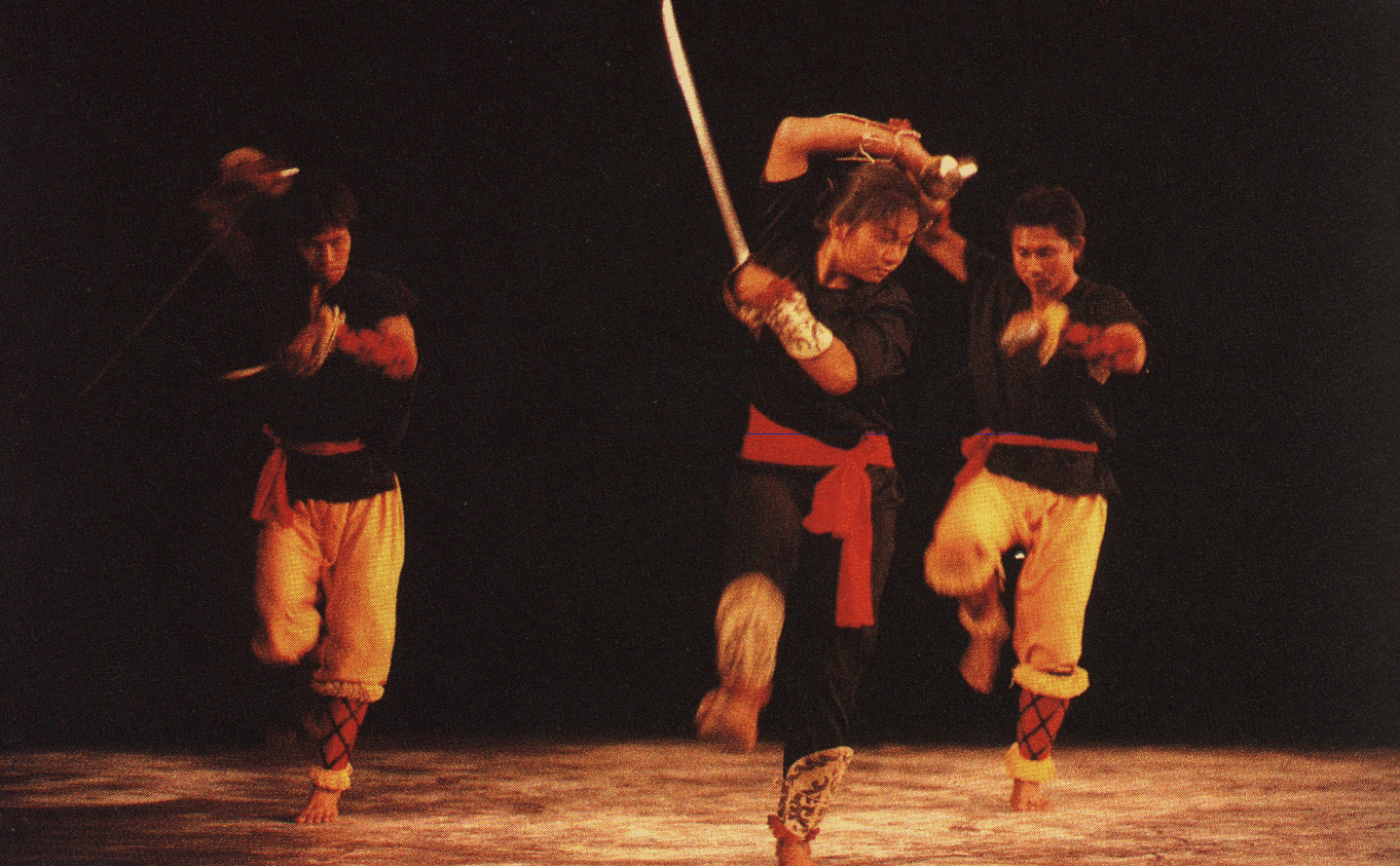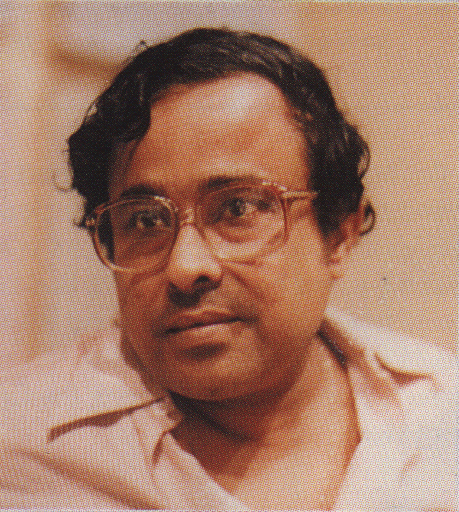Performing Arts
Calcutta is the seat of performing arts in this part of the world. Calcutta's citizens love music and theater and they thrive in the city in various ways. Calcutta's discerning audience is appreciated by performers making it a popular venue for large concerts. Calcutta consequently has some of the finest auditoriums and theaters in the country.
Calcutta's citizens' passion for music is arguably best represented by the countless home-run schools of music that have mushroomed in the residential neighborhoods. Most children are imparted some kind of education in music so that they grow up to be good listeners if not performers themselves. While western classical music has declined in Calcutta, as it has in most places, it can be heard at concerts at the Calcutta School of Music, an institution that upholds the traditions of the erstwhile Calcutta Symphony Orchestra. Western classical music concerts are also held regularly at the American Center, the British Council, Alliance Francaise and Goethe Bhawan.
Indian classical music on the other hand has continued to grow in popularity throughout the history of the city. During the eighteenth and nineteenth centuries, Indian classical music was the domain of the so-called nautch girls, women who would sing and dance and were regarded with slightly more respect than prostitutes, in a society that was emerging from traditions inherited from the Middle Eastern ruling class for the last four centuries. Classical musicians were patronized by the decadent rich alone. The growth and stability of Calcutta together with the political turmoil in the rest of the country as the British built their empire led a large number of such musicians to migrate from the traditional centers of Indian classical music in Gwalior, Lucknow and Varanasi. As a matter of fact, the last Nawab of Oudh, a noted patron and a poet himself moved to Calcutta from Lucknow with his entire court in the middle of the nineteenth century, bringing with him the finest thumri singers. In due course, these musicians established themselves in the Bowbazar area. By the beginning of the twentieth century, classical music had become far more respectable than ever before and the advent of the recording studios in Dum Dum, the cinema studios in Tollygunge and patronage from the upper-middle class ensured further growth of classical music in Calcutta. Classical music came of age with the first All-India Music Conference held in the mansion of Manmatha Das in the Burrabazar area in the early 1930s. The mansion is extant to this day, and guests are welcome, and the gentleman who resides there is an extremely knowledgeable person.
Calcutta's most famous classical musician is beyond doubt the sitar maestro, Ravi Shankar, who lived in the United States during the 1960s and 70s and introduced Indian classical music to western audiences in a big way. Other big names in classical music include the vocalist brothers, the Dagars, the violinist, V G Jog, and the other sitar exponent Vilayat Khan. Most of the classical concerts are held in Kala Mandir on Theater Road, Birla Sabhagar in Ballygunge, in Rabindra Sadan on Cathedral Road, Mahajati Sadan on Central Avenue, Ramakrishna Mission in Gol Park and Netaji Stadium in Eden Gardens. Dover Lane Music Festival, held in winter, is an absolute must in the cultural circuit of Calcutta, and tickets are hard to come by.
Calcutta is a major center of dance and choreography. The most famous of Calcutta's dancers was the late Uday Shankar, elder brother of Ravi Shankar, and the partner of the famous ballerina, Anna Pavlova. Uday Shankar introduced the concept of fusion of western ballet with India's many classical and folk dance forms, a concept that, apart from having been copied ad nauseum in Indian cinema, is being used by Uday Shankar's family to this day. Uday Shankar's wife Amala is a veteran danseuse herself and her increasingly rare guest performances cause a near-stampede situation at the auditorium box offices. Uday Shankar's son Ananda Shankar was one of the most famous art choreographers until his sudden and untimely death in 1999 and ran the Ananda Shankar Ballet Troupe with his dancer wife Tanusree Shankar. Uday Shankar's daughter Mamata Shankar is a noted actress but her primary occupation is dancing and directing her own ballet group.
Calcutta is a major center for Indian classical dance. Kathak, from the Bowbazar days, has been outdone by other dance forms that have gained far greater acclaim. Calcutta is a famous center for the Kathakali dance, the colorful dance form of the southern Indian state of Kerala, thanks to the Kerala Kala Mandalam located here and the only one outside Kerala. Manipuri dance was introduced to Calcutta by Rabindranath Tagore who modernized and adopted this dance form for his choreographic pieces of music. Traditional Manipuri dance continues to enjoy considerable patronage, primarily due to the school run by the Manipuri doyen, Bipin Sieng and also because of the Birla Academy of Art which offers regular courses in Manipuri dance. A new development is semi-choreographed performances of Manipuri martial arts in the Academy as well.
The greatest name in Calcutta's world of performing arts is Rabindranath Tagore. A scion of the illustrious Tagore family of Jorasanko, Rabindranath was a poet, lyricist, painter, choreographer, actor, visionary, teacher, orator and composer. Tagore was the first Asian to be awarded the Nobel Prize in 1913, for his anthology Gitanjali (Offering of Songs). Tagore set his lyrics to music, what is now known as Rabindrasangeet and is probably the most popular kind of music in Calcutta, even a hundred years after it was first heard. Tagore acted in the first modern theater that had both men and women in the cast. The ladies were from respectable families, including Tagore's sister-in-law herself, breaking a social taboo in Victorian times, something unheard even in London at the time. Tagore encouraged the direct participation of the masses in cultural activities and founded the Viswabharati University in Shantiniketan, about 200 kilometers (125 miles) north of the city. The ancestral Tagore home is now the Rabindra Bharati University's Fine Arts Building and continues to further Tagore's legacy. Rabindrasangeet singers, old and new, are very popular in Calcutta, the most notable being Kanika Banerjee, Suchitra Mitra, Sumitra Sen and Indrani Sen to name just a few. Concerts are held round the year in various auditoriums like Rabindra Sadan, Mahajati Sadan, Birla Sabhagar, Jorasanko Thakurbari (the ancestral home of Tagore), etc. The most famous event in the Rabindrasangeet calendar is the 25th of Baisakh (the first month of the Bengali calendar) celebration, which happens to be the birthday of Tagore. The day is marked by early morning concerts at Jorasanko Thakurbari and Rabindra Sadan and a fortnight-long festival at Rabindra Sadan.
Tagore's other major contribution to performing arts is the giti-natya, the Indian opera. Tagore's operatic works are staged round the year, especially during his birthday celebrations, often by the Shankars.
Kazi Nazrul Islam was another famous poet, lyricist and composer of Calcutta. Renditions of his works are known as Nazrulgeeti. Nazrulgeeti is also an extremely popular style of music and a number of concerts are held round the year. Notable Nazrulgeeti singers include Anup Ghoshal and Firoza Begum.
Even before modern theater arrived in Calcutta, Bengal had its own theatrical tradition in the jatra, an open air theater. The jatra was revived first during the Independence movement and later by the local Communists, as it was an effective tool to reach the masses. The jatra season begins after the monsoons and ends with summer, with groups participating from all parts of Eastern India and Bangladesh. Modern theater was introduced to Calcutta in the nineteenth century by a Russian nobleman by the name of Lebedoff, although the first European theater existed in what was then known as Tank Square and is now known as Dalhousie Square in the 1770s. The local Bengali population already addicted to jatra took to theater like ducks to water. Star Theater was established on College Street soon after with actors like Girish Ghosh and actresses like Nati Binodini. Theater has not looked back in Calcutta since then, be it Bengali, English or French. The historical Star Theater burnt down a few years ago, a most unfortunate accident, by all means. Theaters include the Girish Mancha in Bagbazar, the Sisir Mancha on Lower Circular Road and the Nazrul Mancha in the Dakshinapan Complex, besides the classical Rangana Theater in Shyambazar and the usual auditoriums.
atering savories that are just as enticing as the sweets.

Professor VG Jog, Calcutta's resident violinist, the only major violin exponent in the Hindusthani School of Classical Music.

A performance of Manipuri martial arts.

The title page of a compact disk of Tagore's famous opera Shapmochan (Absolvence from the Curse). Tagore's operas are very popular in Calcutta. © Gramophone Company of India Limited, Calcutta.

Anup Ghoshal, a famous Nazrulgeeti singer.